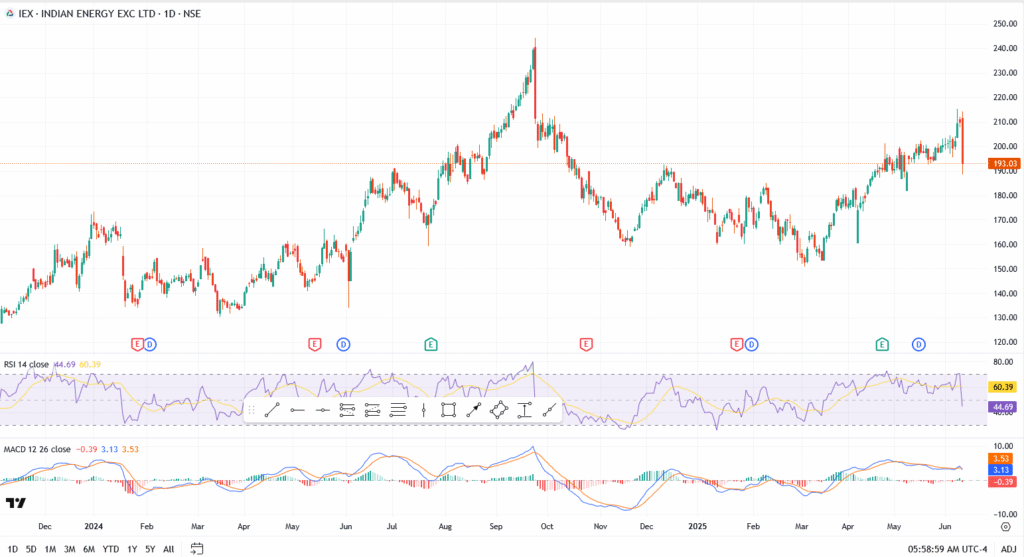Shares of the Indian Energy Exchange (IEX) fell by almost 10% today as investors were once again plagued by worries of market coupling. Following news that Power Minister Manohar Lal would meet with important stakeholders to propose the establishment of a unified power market, there was a dramatic selloff. The revenue model of IEX may be significantly changed by this action.
Market coupling works by pooling bids across all power exchanges to decide one uniform clearing price. For IEX, which currently handles over 90% of the country’s power trade, it risks losing its price-setting role and being reduced to just a transactional platform.
Why IEX Stock Is Falling: What’s Changing in India’s Power Market?
- The government is revisiting an earlier proposal to consolidate market operations through a centralised clearing mechanism.
- Traders fear this will reduce IEX’s margins, volume visibility, and control over price discovery.
- While regulators argue that the move will stabilise prices for consumers, it threatens to flatten competitive differentiation among exchanges.
IEX Technical Analysis: Breakdown or Bounce?
The chart shows Tuesday’s selloff wasn’t just noise; it breached key levels. Here’s how the structure stacks up:
- Support broken at ₹205, triggering a sharp reversal
- Price now hovering near ₹193, a psychological pivot zone
- Next support at ₹186, followed by ₹175 if selling intensifies
- MACD just crossed bearishly below the signal line (3.13 vs 3.53), flashing a fresh sell signal
- RSI dropped from a healthy 60 to 44.6, momentum is clearly cooling

Outlook: What Investors Should Watch
Unless the government offers regulatory clarity, IEX shares may stay volatile. Institutional players are watching the June meeting closely. If market coupling gets greenlit, expect a fundamental repricing of the stock.
For now, the bulls have lost control. The ₹205–210 zone has flipped into resistance, where the next battle will be fought.


